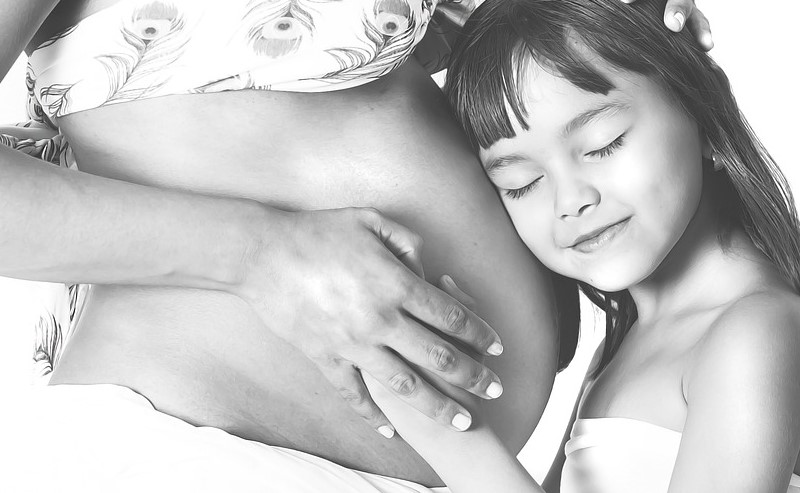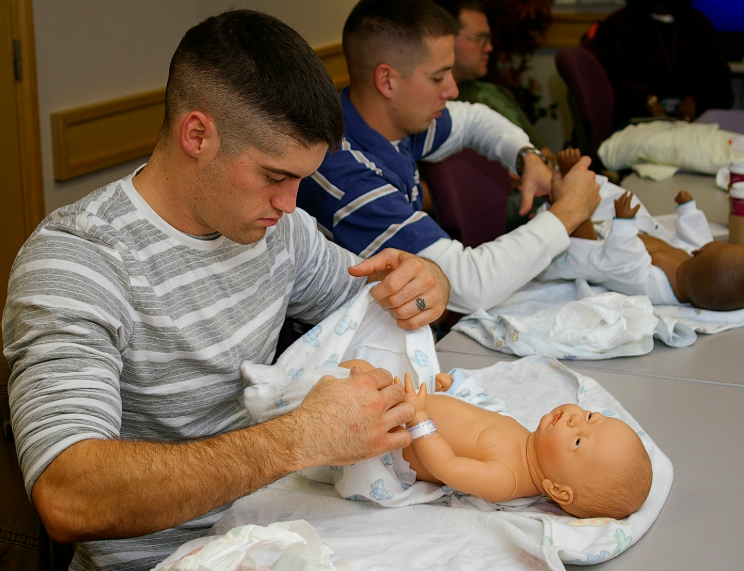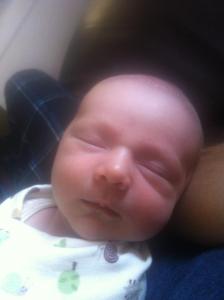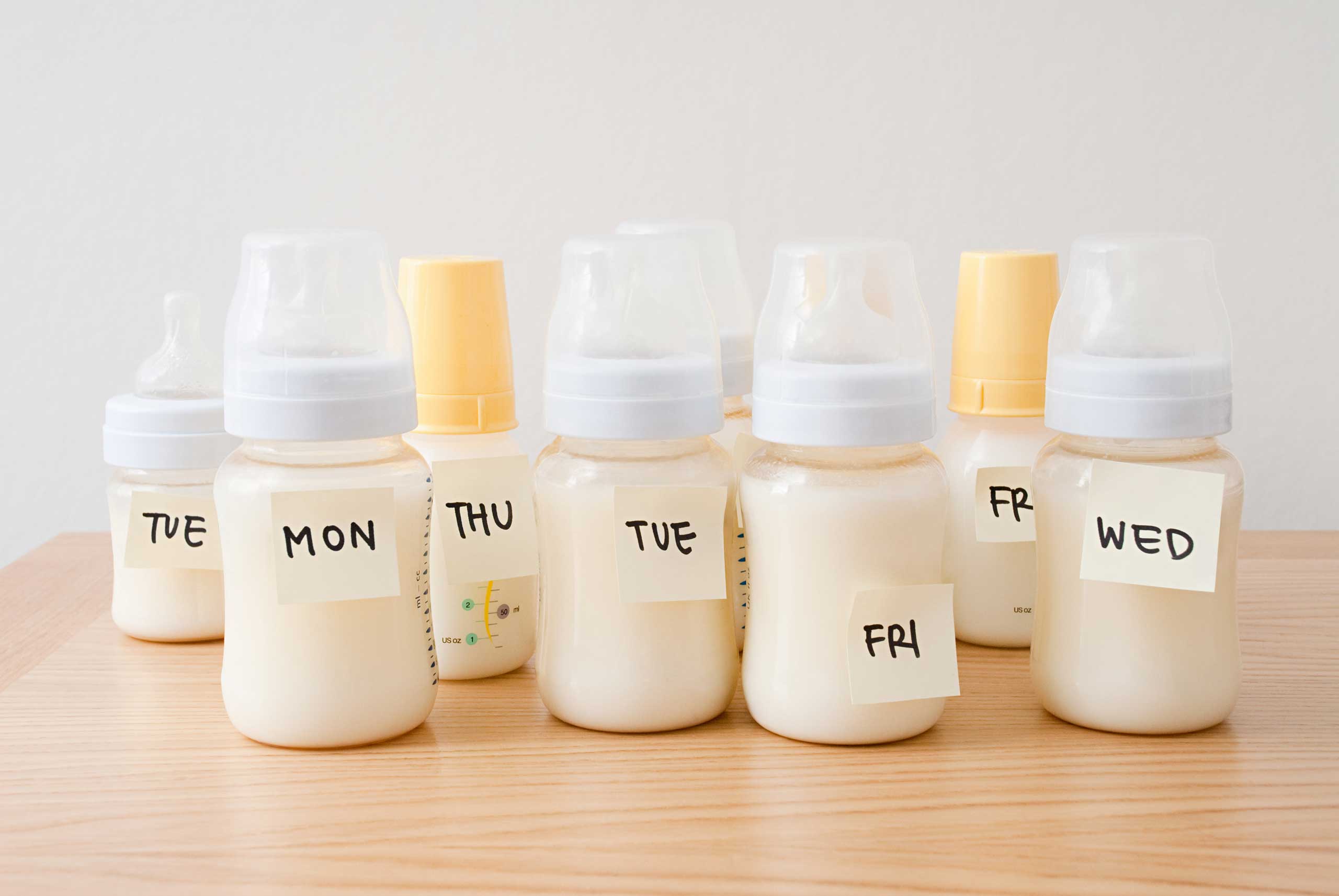
Bringing home a new baby is always a little overwhelming! Maybe a little less so when it’s a second or third baby, but now you have a new challenge (apart from parenting a newborn). You are now introducing an infant to your older children!
Recently, my older sister just gave birth to a beautiful baby girl. She brought her home to her loving family, which included three older siblings! With my new little one on the way, and with two older children, I decided to get some helpful info from her and her children on how to accomplish a smooth introduction. This, coupled with a little online reading, prepared me with a few helpful tips!
Introductions for Under Twos
From age 2 years and under, these adorable introductions shouldn’t affect the older sibling too much, but you can always make the encounter easier. Start by talking to your child or children about the baby before you bring the baby home. Tell them about your growing stomach and that there’s a baby inside, waiting to meet everyone. Let your child help you decorate the nursery or fold the new baby’s clothes. Show your child the new baby’s toys and belongings. Use age appropriate language and show your child lots of love throughout the process.
If things are anticipated to change for your existing child or children, such as having to switch rooms, potty train, giving up the crib or bottles, do so a couple months before the new baby comes. If this isn’t possible, do so a few months after the baby comes. This separates associating the baby with change. You want to show your child that things in the house are still stable, and that changes to routines or living conditions aren’t a result of the new baby.
When we introduced Grizzly Bear to his new sibling, Polar Bear, the encounter could not have been cuter. We did do a lot of foreshadowing using books, songs, and getting “new” things for the baby. Grizzly Bear did a fantastic job of accepting his new brother, and was very gentle. He did ask when the baby would be ready to “play” with him. With a little patience, he waited for his brother to grow into the masterful little sidekick he is and now they are inseparable!
Introductions for Two to Six
This is the stage that I will be at come June. Grizzly Bear and Polar Bear will be six and four when this bundle arrives, and as I’ve never introduced a sibling within this age range, I sought out some pointers.
Turns out, the best practice for introducing a new baby to children of these ages is to explain a little more about the baby and what the older child can expect. Again, this is best done well in advance and consistently. Tell your child that babies eat a lot, sleep plenty, and are avid criers. Give your older child a doll so that he or she can be a caregiver, too. Look at your older child’s baby pictures together and tell the story of his or her birth. Children this age are still quite attached to their parents so it’s key to voice and demonstrate that they are still loved and cared for. It’s also helpful to let them know in advance that a trusted adult will be watching them while you go have the baby.
When the baby arrives at home, you can let the older sibling hold the baby. The more knowledge and experience they have with the baby will cement the bond. I also read that it’s a good idea to give the older sibling a gift from the baby, and to do something fun, like go to the park, to celebrate the baby’s arrival. These are all things I’m looking forward to with my growing family this summer!
Introductions for Six and Up
Kids six and up (even teenagers) need a bit of positive coaching too! This was the stage my sister was at when she had her baby.
Before having your baby, you should let your kids know what is happening, and get them excited to have a sibling! Tell them that soon they will be having a little brother or sister that will need lots of care from Mom and Dad, and tell them how they can help out too! Give them ideas of fun things they will be able to do immediately, like decorate a baby room or take selfies with the baby, and things yet to come, like shared adventures and play-time. Reiterate your love for them and let them know that a baby will not change that. The introductions should be a bit smoother since your child is a little more mature and understanding, but still show your love to the older sibling while they bond with the little one.
My niece, who just welcomed her new sister into the family, had this to say about their introduction:
“When my mom brought home my sister, I was ecstatic! I hadn’t had a little sister before and I was excited about the tea-parties and the memories we will make together. When I was younger and my mom brought home my brothers, I liked to help by picking out my brothers’ outfits and showing them how to play fun games! I am pretty sure that helping out with my brothers when I was younger improved my relationships with them, as well as made me feel like an awesome older sister!”
Hello World!
Like I mentioned, welcoming a baby into the family can be overwhelming, but there’s every good chance that it will be an immensely thrilling adventure and positive memory for everyone! If nothing else, remember to show your child, no matter what age, that you still love them just the same. While you can’t spend all your free time with the older sibling, always set aside some time for one-on-one with them.
For more information, tips, and specifics on baby introductions, click here. And as always, send me stories, information, or even questions! Would love to hear from you!






